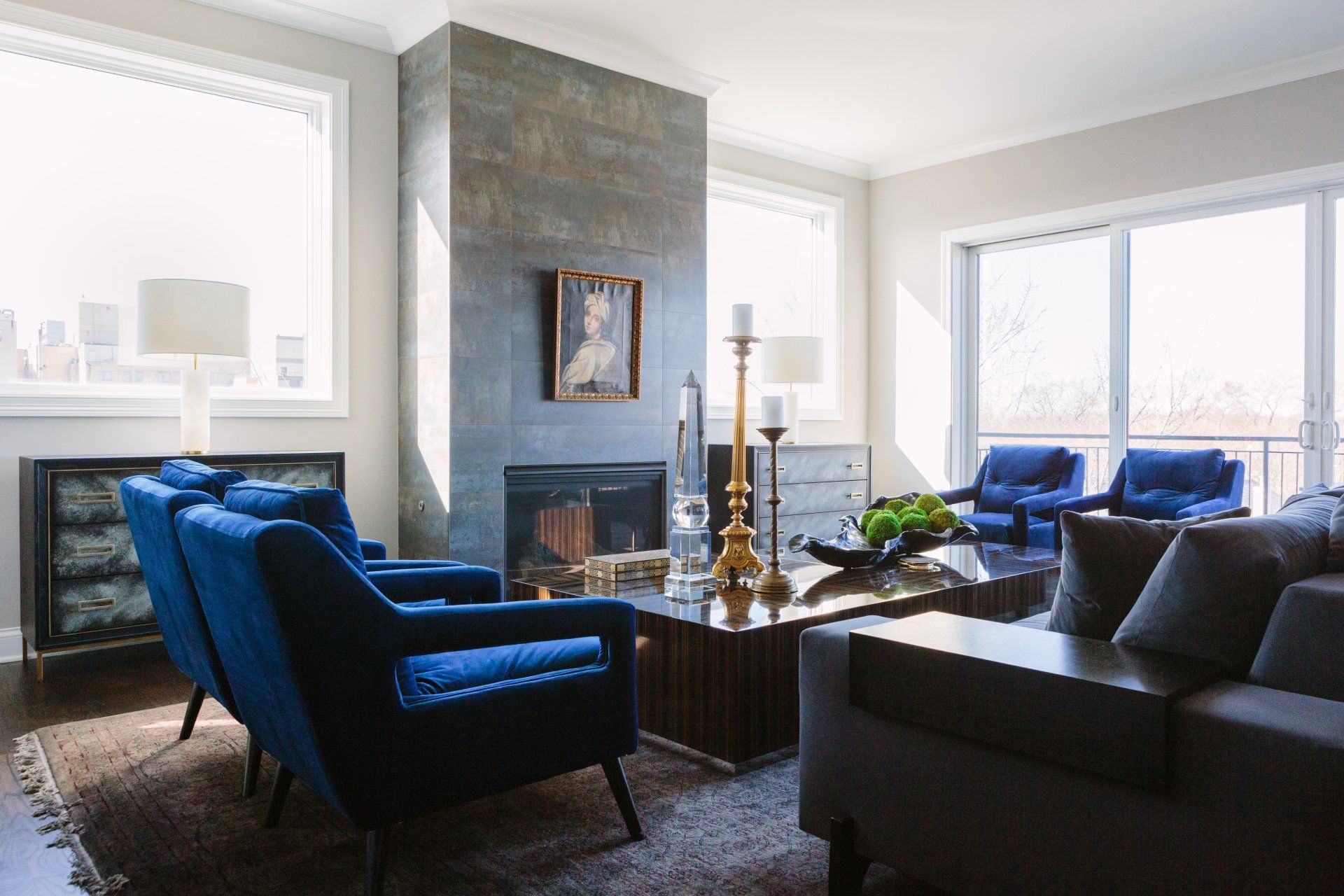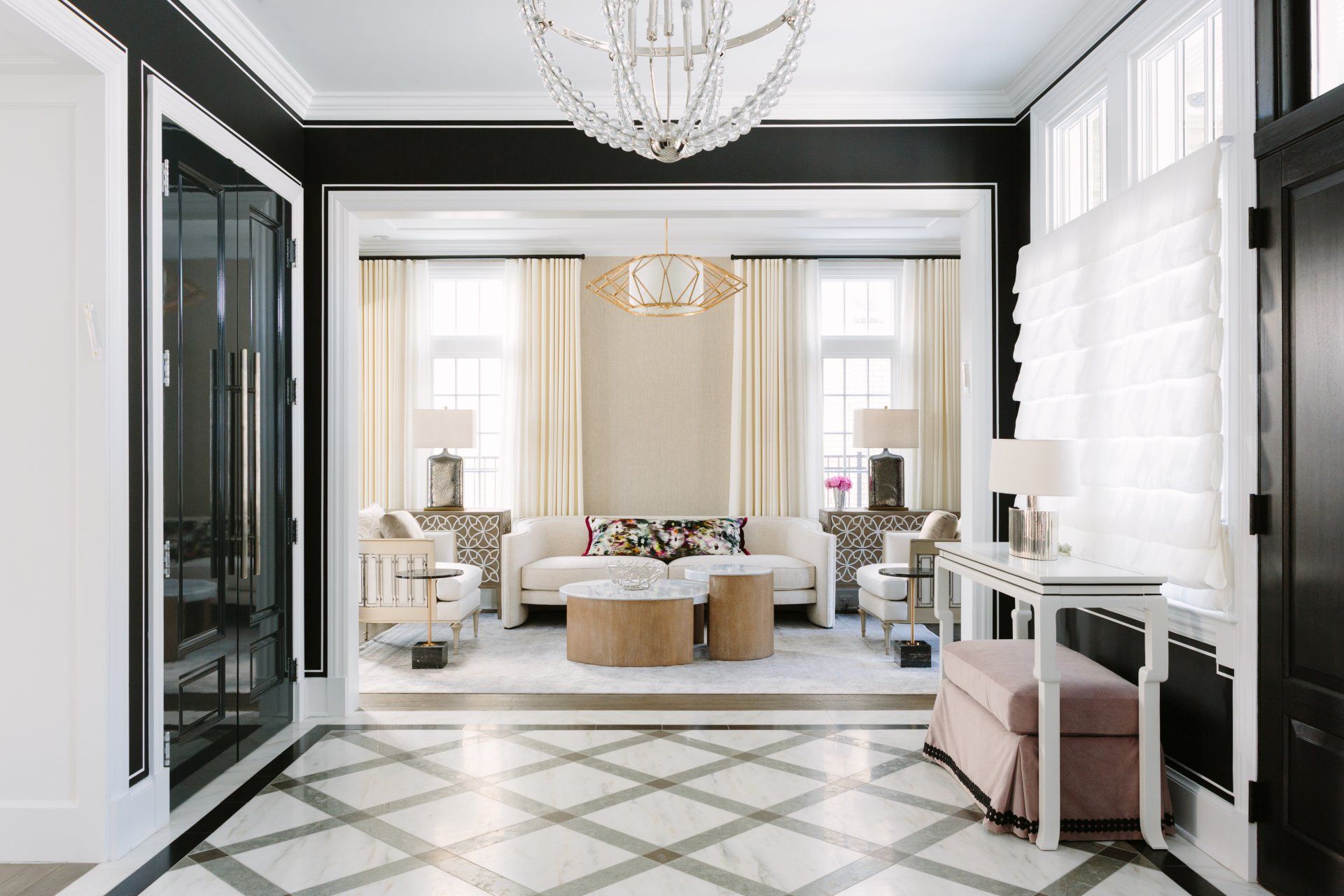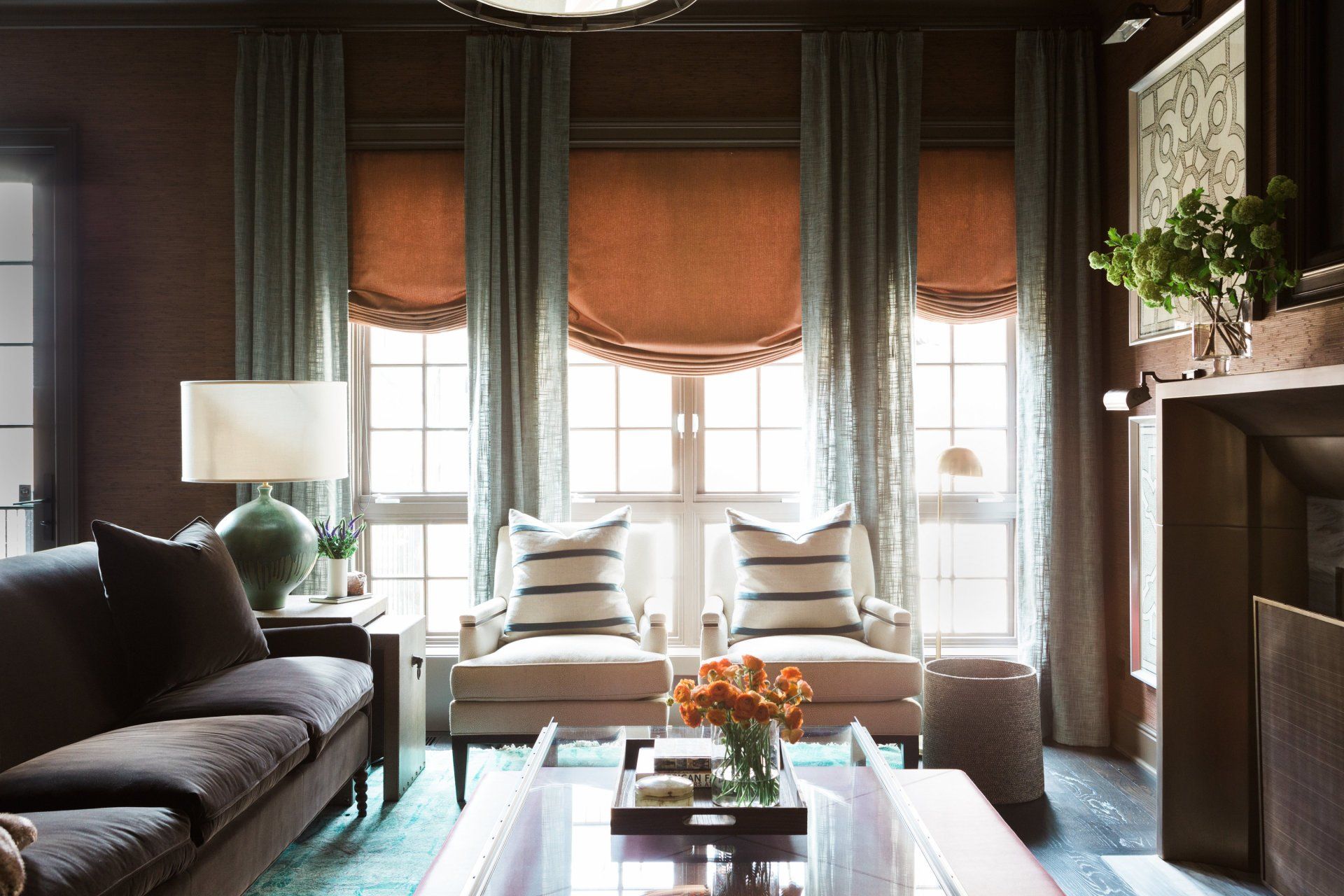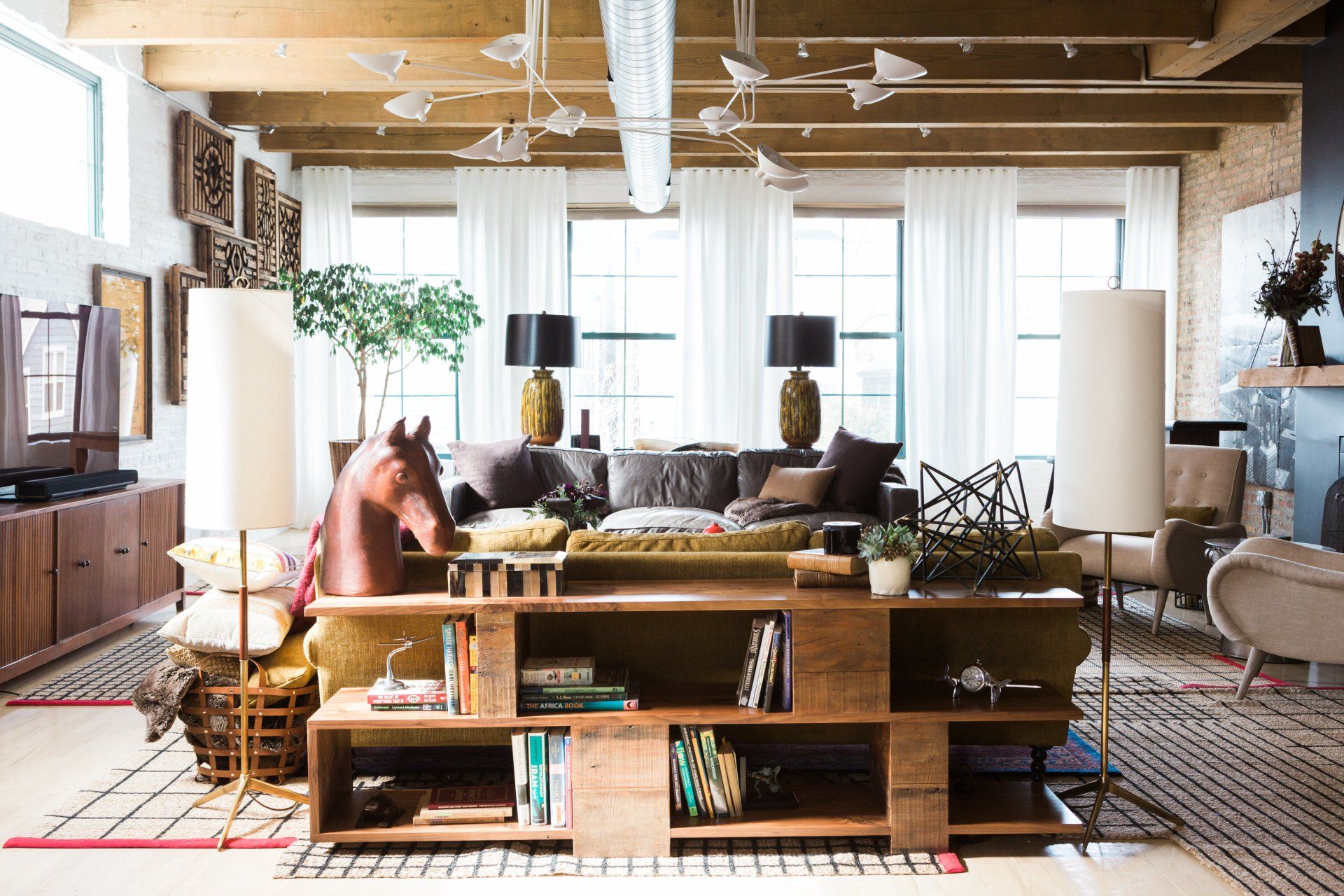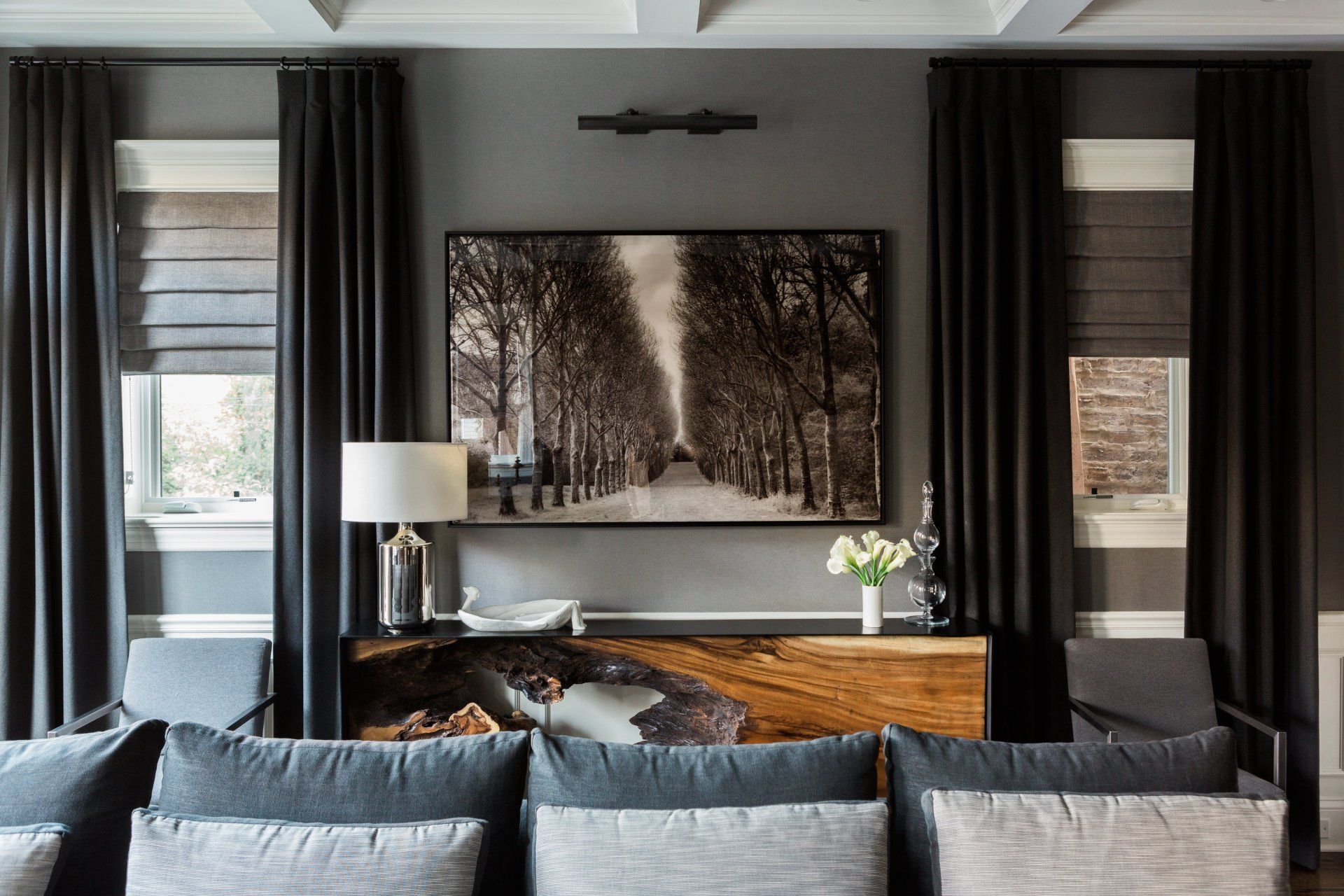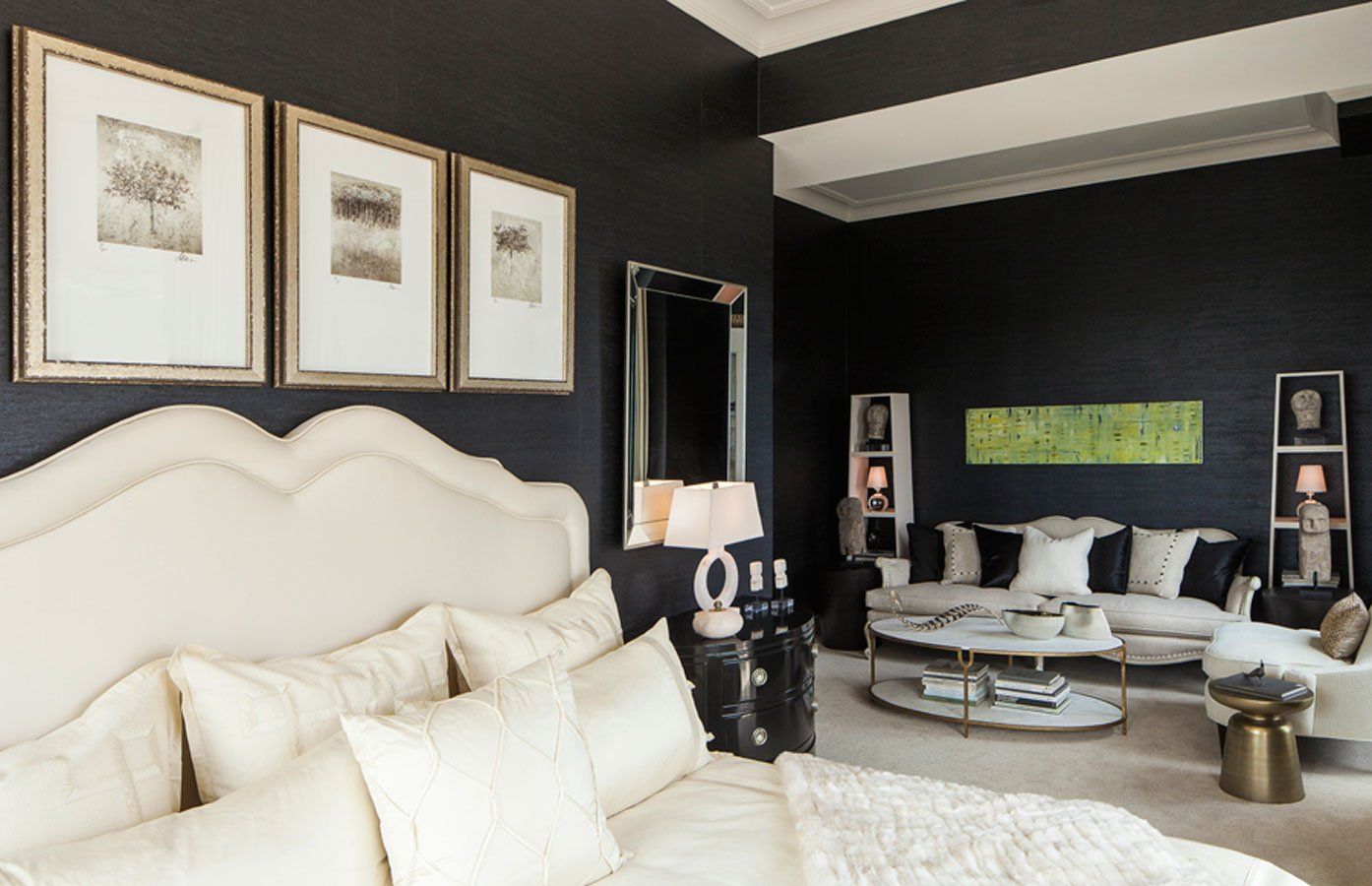Sustainable Commercial Interior Design for Offices
Anthony Michael • October 7, 2024
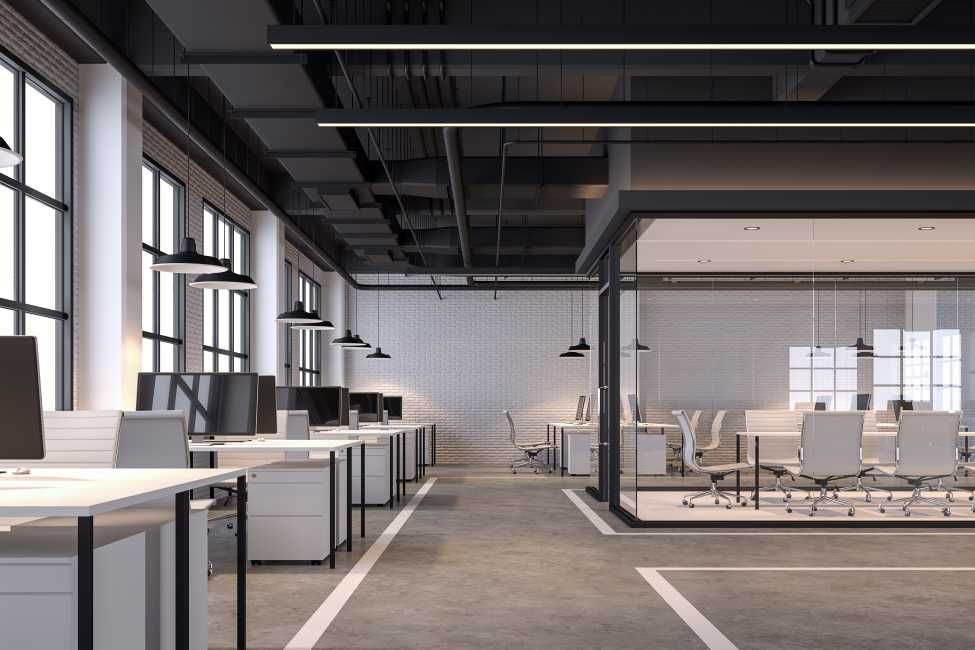
Creating a sustainable office interior can boost productivity, lower operating costs, and minimize environmental impact. Sustainable commercial interior design integrates eco-friendly materials and energy-efficient systems while maintaining a visually pleasing workspace. From sourcing responsibly to reducing energy usage, designing with sustainability in mind brings long-term benefits to businesses and the planet.
1. Use of Recycled Materials
One of the key principles in sustainable commercial interior design is using recycled and repurposed materials. Furniture, flooring, and décor made from reclaimed or recycled content reduce waste and consumption of new raw materials. Opting for recycled glass or metal, along with repurposed wood, is an excellent way to limit the demand on natural resources while achieving an aesthetic balance.
2. Energy-Efficient Lighting Solutions
Lighting is a crucial aspect of any interior design project, and energy efficiency is a fundamental factor in green interior design. LED lighting uses less energy and lasts longer than traditional options, lowering a building’s carbon footprint. Motion sensors, daylight sensors, and smart lighting systems further reduce energy consumption by ensuring that lights are only used when necessary.
3. Incorporating Natural Materials
Sustainable design thrives on incorporating natural materials like bamboo, cork, and reclaimed wood. These materials are renewable and biodegradable, aligning with the goals of sustainable interior design . Selecting materials certified by organizations like the Forest Stewardship Council ensures that the products are harvested responsibly, promoting environmental sustainability.
4. Indoor Air Quality Improvements
Improving indoor air quality is essential in interior design and sustainability. Choosing low-VOC (volatile organic compound) paints and adhesives reduces toxins in the environment, promoting healthier indoor air. Additionally, plants that naturally filter the air are increasingly popular in sustainable commercial interior design due to their ability to enhance air quality while offering aesthetic benefits.
5. Water Efficiency Measures
Water conservation plays a significant role in sustainable design interior design. Installing low-flow faucets, toilets, and water-efficient appliances in office kitchens or restrooms conserves water while lowering operational costs. Additionally, integrating rainwater harvesting systems into building designs offers a renewable water source that can be used for irrigation or cleaning purposes.
6. Smart Building Technology
The integration of smart technology is another key element in green interior design. Automated systems that regulate lighting, temperature, and energy usage create more efficient and environmentally friendly spaces. Smart thermostats, for example, adjust heating and cooling based on occupancy, helping to conserve energy and reduce utility bills.
7. Flexible and Modular Furniture
Choosing flexible and modular furniture contributes to sustainable commercial interior design by allowing for easy reconfiguration and reduced waste. Instead of replacing large pieces of furniture, businesses can adapt modular furniture as needed, extending its lifecycle. This approach reduces the amount of furniture ending up in landfills and minimizes resource consumption.
8. Sustainable Flooring Options
From reclaimed wood to sustainable carpeting, the flooring materials used in sustainable interior design make a big difference. Carpets made from recycled materials or natural fibers like wool offer a lower environmental impact. Bamboo and cork are also popular sustainable flooring options due to their renewability and durability.
9. Biophilic Design Elements
Biophilic design connects people with nature by integrating natural elements into indoor environments. Including plants, water features, and natural textures into interior design and sustainability projects can improve mental well-being and productivity in the workplace. This is a growing trend in sustainable commercial interior design as it aligns with both human and environmental health.
10. Responsible Waste Management
Finally, responsible waste management is essential in sustainable design interior design. Implementing recycling programs, using eco-friendly disposal methods, and choosing materials that are recyclable or biodegradable helps businesses manage waste effectively. Reducing construction waste through careful material selection and reuse further enhances sustainability in office design.
Frequently Asked Questions
1. What are the benefits of sustainable commercial interior design?
Sustainable commercial interior design offers numerous benefits, including lower energy and water usage, healthier indoor air, and reduced waste. It also boosts brand reputation and increases employee well-being.
2. How do I make my office more sustainable?
Start by using eco-friendly materials, optimizing lighting systems, incorporating natural elements, and installing energy-efficient appliances. Small changes can have a significant impact on the sustainability of your office.
3. What is the difference between green and sustainable interior design?
Green interior design focuses on eco-friendly practices, while sustainable interior design encompasses a broader approach that includes environmental, social, and economic factors, ensuring long-term impact.
Design for the Future
Creating an eco-friendly office space is an investment in both the environment and your business's future. By integrating principles of sustainable commercial interior design, you not only reduce your environmental footprint but also create a workspace that promotes productivity and well-being. Explore sustainable options and make your office a hub for innovation and responsibility. Visit Anthony Michael Interior Design to learn more about sustainable interior design solutions for your commercial space.
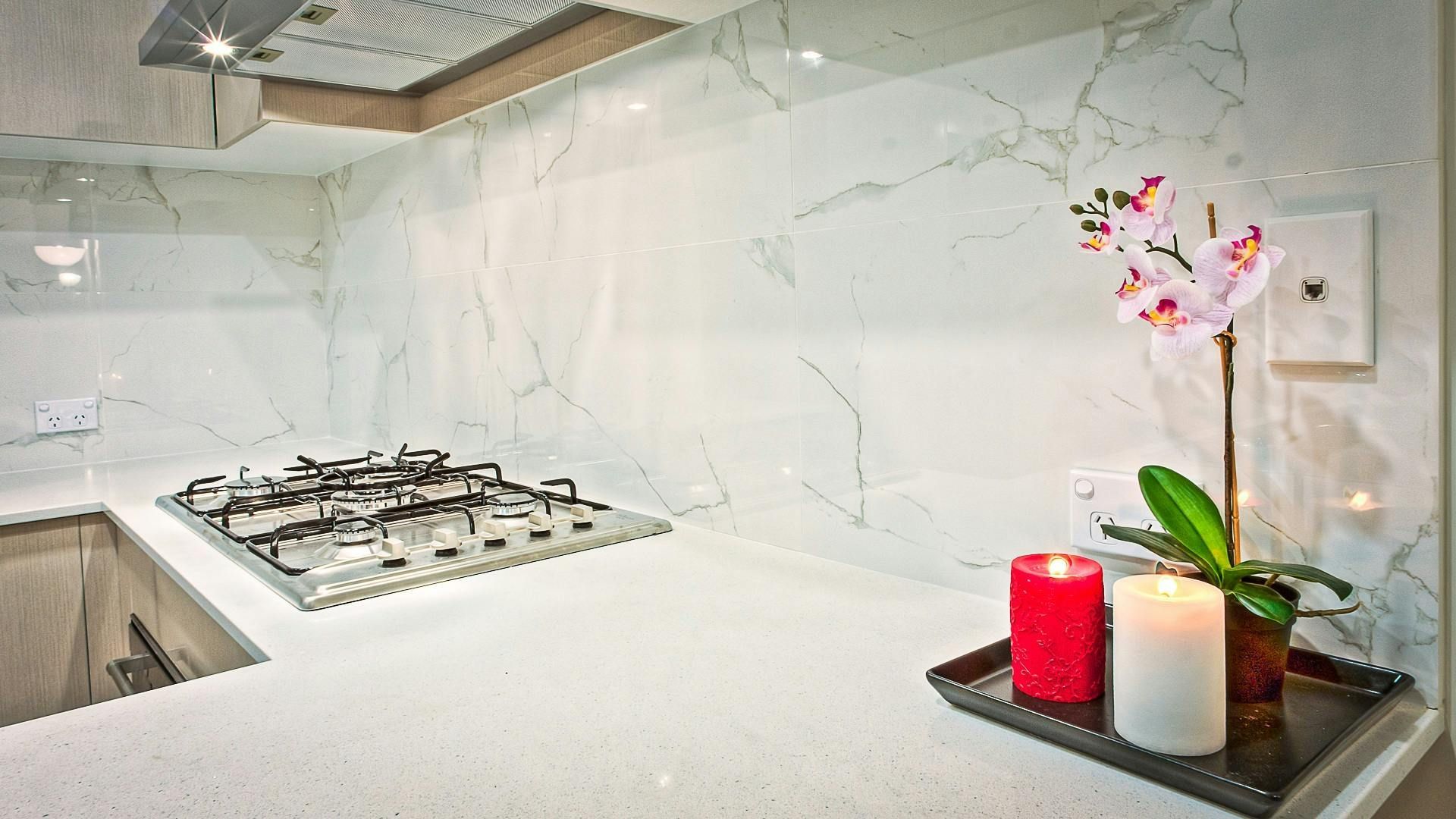
Updating your home’s color scheme is a great way to welcome the new year, and what better way is there to tackle this project than to take inspiration from the 2026 colors of the year? Most of these hues are earthy and sophisticated with a strong connection to nature. Grounding and restorative, they reflect a strong desire for serene sanctuaries. If you’re interested in welcoming the new year with a palette refresh, the following combinations bring out the best in these shades. 1. Benjamin Moore's Silhouette: Sophisticated and Graceful Benjamin Moore’s 2026 color of the year is a deep, luxurious brown with a soft charcoal undertone, giving it a sense of refined elegance. Silhouette is perfect for creating an intimate, cozy and high-end atmosphere. Consider painting this on walls for a dramatic, enveloping feel. Use creamy off-whites for trims, ceilings or a large area rug to provide contrast and keep the space from feeling too dark. Accent the pairing with soft, dusty pinks through velvet pillows, throws or artwork for a touch of warmth and romance. Complete the look with polished brass or gold hardware and dark walnut wood furniture. 2. Behr's Hidden Gem: Elegant and Modern Hidden Gem is a smoky, jewel-toned jade with blue undertones. It’s muted enough to feel elegant and versatile without overpowering, making it ideal for modern-organic and midcentury modern aesthetics. Use Behr’s 2026 color of the year on kitchen cabinets, a living room accent wall or a vanity in a bathroom. Complement it with light wood tones like white oak or maple for flooring and furniture to keep the room feeling bright and modern. Ground the look with sharp black accents in light fixtures, side tables and wall decor. Finally, add texture and color with rich brown leather furnishings, woven natural fiber rugs and green indoor plants. 3. Valspar's Warm Eucalyptus: Earthy and Serene Valspar’s 2026 color of the year is a mid-tone green with a gentle warmth. With its strong connection to nature, this biophilic hue promotes a sense of peace and well-being. Warm Eucalyptus goes well on the walls of a bedroom or bathroom. Pair it with sandy beige through linen curtains or a comfortable armchair. Lean into its earthy tones with pops of muted terracotta color in mugs, planters or patterned textiles. Complete the look with natural textures like rattan or wicker baskets, jute rugs, and unglazed pottery. 4. Sherwin-Williams' Universal Khaki: Comforting and Timeless Universal Khaki is a mid-tone beige with warm undertones that never goes out of style. It has a “chameleon” quality, as it can feel modern or traditional, depending on what it’s paired with. Paint Sherwin-Williams’ 2026 color of the year on the walls of a large, open-concept space to unify the area. Pair it with a classic, crisp white for trims and doors, then add dusty blues and olive greens to the palette through decor, textiles and art. Opt for materials like brushed nickel, aged brass and traditional wood furniture for a classic look. 5. Pantone's Cloud Dancer: Tranquil and Airy Pantone’s 2026 color of the year is a soft, billowy off-white with minimal undertones, representing a desire for simplicity. While Cloud Dancer can serve as a quiet, peaceful canvas for any palette, it looks stunning in Scandinavian and coastal-inspired looks. Paint walls with this shade to maximize light and create an open, airy feeling. Layer the palette with other light neutrals — like a soft, pale gray sofa or bedding — and accent the look with textures instead of color. Use materials like light, weathered wood, natural linen and chunky knit wool throws. Enhance the setup’s comforting atmosphere with boucle fabrics, sheer linen curtains and light-toned flooring. How to Choose and Use the 2026 Colors in Your Home To plan the perfect palette for your space, think of these big-picture considerations before picking up a brush or shopping for decor: Consider the room’s purpose: Valspar’s Warm Eucalyptus is ideal for bedrooms because it’s a soothing shade of green , while a more dramatic hue like Benjamin Moore’s Silhouette is perfect for dining rooms. Factor in lighting: How much light a room gets and from what direction can affect color quality , so assess your space’s lighting conditions at different times of day. Create energy with complementary colors: Combine shades on the opposite sides of the color chart — such as turquoise and cream — to create powerful, high contrast combinations. Start small when integrating color palettes: Consider low-commitment ideas, such as painting an accent wall or the back of a built-in bookshelf, getting new duvet covers, or finding area rugs and artwork that feature the palette. Refresh Your Home’s Palette for 2026 These color trends and palettes are a great source of inspiration. There are no hard rules for how to use them, so feel free to create your own combinations or find what blends well with your current scheme. Find the perfect palette to express your style for the year ahead.

There is nothing more enchanting than when your house is aglow with luxurious satin ribbons, gold ornaments in evergreen boughs and twinkling lights both in and outside. It is your time to shine, so dress your home to impress and give every room a little holiday sparkle. Here are some ways to transform your decor from "bah humbug" to a sight to behold. 1. Start With a Warm Glow When you think of Christmases past, you probably remember vibrant colors and bright lights. Bringing some of that warmth into the present can add glamor and purpose to any home. With around 67% of homeowners planning to decorate with holiday lights, choosing something unique can make you stand out from the other houses on your block. Cool white icicle lights create a draped wintery effect that draws the eye, while warm-toned white light can create a homey, cozy feeling. Colored bulbs can seem more festive and inviting. Use a consistent color scheme to keep it classy. 2. Choose a Glam Color Palette A luxurious holiday home can utilize a color palette of gold, champagne, silver, pewter, deep emerald, or midnight blue. These colors work wonderfully with mirrors and metallics. You do not need to change everything you already own to keep the colors consistent. Small swaps can do the trick. Add metallic-colored candles, garland and ribbons. A few mixed finishes, such as brushed gold and polished silver, keep the space visually interesting without overwhelming it. 3. Let Your Textiles Shine Plush faux-fur throws, velvet cushions and satin stockings provide tactile decadence and ensure comfort and glamour. To add a sumptuous touch, top a dining table with a gold-threaded table runner, or drape a fur throw across the bottom of your bed. These soft pieces add warmth next to metal, softening the shine. Your holiday decor will look both luxurious and inviting. 4. Expand Your Space Impress your visitors by finding extra space for all your holiday guests to roam. A garage serves multiple purposes for many families. You can use it to store and access seasonal decorations, and it can also serve as additional seating for gatherings. Your garage is a convenient place to gain extra space when you need it during the holidays. A satin tablecloth can turn a folding table into an elegant dessert table. Tie huge red and gold ribbons to chair backs for an added festive touch and add a small tree in the corner. 5. Layer Textures for a Luxurious Tree Turn your tree into a focal point by using textures and finishes that make it sparkle and shine from all angles. Use both metallic garland and beaded strands. Add oversized ornaments with two or three finishes in the same family, like frosted glass, gold leaf and mirror. Tuck a few specialty pieces in the branches for added interest. Conversation pieces, such as personalized ornaments, add a unique touch. For minimalists, a monochromatic look in gold or silver remains a striking choice. For maximalists, sequins, crystals and pearl detailing are equally stunning. 6. Create an Eye-Catching Centerpiece Centerpieces anchor a room, setting the scene for your celebration. Glam holiday decorations work exceptionally well with varied heights, layers and reflective surfaces. Some things to add to your table include: Tall candlesticks A metal bowl filled with ornaments Crystal or glass components for sparkle Fresh foliage for the base To tie everything together, repeat the metallic accent elsewhere in your display. 7. Add Sparkle to Unexpected Places Small touches can create a significant impact. Decorate in unexpected spaces like the hallway, bathroom and bedroom. Your guests might enjoy a bowl of silver ornaments on a bedroom nightstand, a strand of fairy lights draped over a hallway mirror, or a wreath tied with satin ribbon near a bathroom sink. The little touches make the transformation to an elegant holiday showpiece feel complete. Sound and scent add another dimension to the festivities and involve all the senses, so consider festive candles and ongoing ambient holiday music. 8. Style Your Mantel Remember your mantel for the perfect glam display. Use metallic candleholders, glittered garlands, or tall glass hurricanes. Stagger the display to let light hit the whole mantel, with ornaments and greenery tucked between the candlesticks and garland. Place a symmetrical vignette of matching candlesticks and a statement mirror above the mantel for a more tailored look. 9. Echo the Glamor Outside Choose warm-white lights, metallic bows, or frosted wreaths to extend the interior sparkle outdoors. Glow up the entryway by lining the front walk with lanterns. Wrap porch railing in satin ribbon and white twinkle lights. Small touches can welcome guests, including an elegant white wreath hanging from your front door. Set the tone before your guests arrive. Build the Sparkle One Day at a Time A hint of glow here, a dusting of metallic there, and suddenly your home is dressed for the holidays. Add the magic one room at a time, layering the look as inspiration strikes. You can achieve elegant decor with a few focal points rather than bling everywhere. With consistent effort, you'll impress visitors and have a home that shines brighter than the star on top of your tree.

The scent of pine, the warm glow of lights and the comfort of enjoying a warm cup of cocoa by the fire — there’s nothing quite like the holidays. Decorating your home is a great way to welcome the season, but the pressure to capture that festive spirit can be overwhelming. To avoid going overboard and making your space look cluttered, consider going for a sophisticated yuletide look. Make intentional, curated choices to create a warm, personal and elegant look with these decorating tips. 1. Define Your Classic Holiday Theme and Color Palette A defined theme and color scheme can serve as a filter for every other decorating decision, ensuring a cohesive look and preventing impulse buys that don’t fit the concept. Consider these style examples: Nordic winter: Focus on minimalism, natural wood tones and simple greenery paired with a white, black and cream palette Old world Christmas: Incorporates deep, rich colors like burgundy and forest green, vintage-style ornaments and elegant metallic accents in gold or bronze Rustic farmhouse: Includes lots of natural textures, such as burlap and plaid, galvanized metals and simple pine greener y When creating a palette, choose a primary color, a secondary color and an accent metal. For example, use forest green for most of your main decor, contrast it with cream and decorate with gold decor. Let your palette guide your choices for ornaments, textiles, ribbons and even gift wrappers. 2. Layer Natural Greenery and Cozy Textiles Bring the outside in for a lush, timeless feel. Greenery and other natural elements add life, texture and classic scents that artificial decorations can never fully replicate. Go beyond pine. Eucalyptus has a pleasant smell and modern look, while cedar drapes beautifully. Decorate with boxwood for a traditional feel or magnolia leaves to bring a touch of Southern elegance to your space. Learn how to keep your greenery fresh throughout the season, eliminating the need for regular replacements. Consider these placement ideas: Drape garlands down a staircase banister, across large mirrors or along a mantelpiece. Place sprigs or single branches in vases. Incorporate greenery into your dining table centerpiece. Use textiles to add softness and reduce sound in your space, creating a cozier environment. Swap out everyday throw pillows for covers made of velvet, cable-knit wool or faux fur. Use a chunky knit blanket as a tree skirt for a modern twist. 3. Engage the Senses with Holiday Scents Scent is strongly tied to emotions and memories. Integrating it into your holiday setup is a powerful way to establish a festive atmosphere. Here are subtle ways to infuse yuletide scents into your home: Simmer pot: Combine water, orange slices, cinnamon sticks and whole cloves into a small pot on low heat. Dried citrus ornaments: Bake orange slices at 250℉ for three hours to dehydrate them and hang them on your Christmas tree. Essential oil diffuser: Diffuse blends like fir and cedarwood for a “Christmas tree” scent or orange, clove and cinnamon for a “spiced” scent. Scented candles: Light candles with complex, natural scents, such as balsam and spiced cranberry. 4. Light Up Your Home’s Exterior Your outdoor decor sets the first impression of your home, so ensure it reflects the sophisticated holiday look of your interior. Consider these stylish decor ideas: Stick to warm, white lights for a timeless look. Highlight one or two outdoor features, such as a large tree in your front yard or the architectural lines of your roof, instead of covering everything with decor. Line the walkway with simple stake lights. Hang a large, evergreen wreath on your front door. Before putting up holiday lights, make sure your home’s exterior is clean and well-maintained. Ensure roof gutters are clean, intact and clear of leaves and other debris to prevent water damage during the colder months. Double-check any exterior outlets and extension cords for issues before plugging anything. 5. Decorate Planters for a Festive Facade Use potted plants on the porch or your home’s window boxes to create a stylish holiday look that ties the entire front of your home together. Get creative with the plants and decor you place in it. Here are some ideas: For height, place tall elements in the center or back, such as red dogwood twigs, tall birch branches and dwarf evergreens. For volume, opt for lush greenery. Mix different textures, such as fir, pine, cedar and boxwood branches. For variety, add elements that hang over the edge to soften the lines, such as draping eucalyptus and trailing ivy. For a touch of nighttime magic, nestle a string of warm white fairy lights among the greenery. Choose lights with high IP ratings to ensure they can withstand the elements, including harsh winter weather conditions. Cheers to a Season of Festive Elegance Create a classic holiday look with a clear theme and intentional decor choice. Go for a design that engages all your senses. Remember that the ultimate goal isn’t to achieve the “perfect” holiday setup. It’s to create a warm, inviting home that’s brimming with holiday cheer while also reflecting your personal style. So, go for the sophisticated decoration tips that resonate with you to create a beautiful atmosphere that you’d love to share with your loved ones.

Your home is more than a place to sleep or store your belongings. It can be a safe environment that resets your mind and body after a tedious day. A peaceful, well-designed space grounds you, slows your mind and makes everyday life just a bit lighter. Whether renovating or simply refreshing your favorite room, utilize these design elements to transform your residence into a serene retreat. Why a Peaceful Home Is Your Secret to Wellness Your environment shapes how you feel. Studies show that clutter, harsh lighting and noisy surroundings can increase stress levels , while natural light, soft color palettes and order can lower anxiety and promote calm. A peaceful living space helps you think clearly, rest more deeply and feel balanced while looking beautiful. When your residence is your sanctuary, it supports your overall well-being. That might mean more focus during the day, better sleep at night and a steady sense of comfort in between. 6 Serene Tips to Transform Your Home You can create a serene home environment that suits your needs and makes you feel at ease. These effective strategies will help you create a living space that nourishes your mind, body and spirit. 1. Build a Soothing Color Foundation Color has a powerful effect on mood. A calm interior often starts with muted, balanced tones that evoke a sense of peace. Think earthy greens, sandy neutrals, soft blues and warm grays. As a general rule for creating a cohesive palette, balance three core tones across elements of your home — the main “field” for architectural details, a secondary “trim” color and a subtle “accent” shade to add depth. This approach ensures harmony between materials and finishes, whether you’re choosing wall paint or exterior details. Balance the three colors using the 60-30-10 rule , also known as the golden ratio, to achieve the optimal balance for managing your pigment palette. Essentially, 60% of surface area is reserved for the dominant tone, while 30% of surface space is painted in secondary hues and the remaining 10% adds interest with accents. Ensure harmony with soft matte finishes for the main colors and tone down brightness or limit accent colors to reflect light more naturally. 2. Maximize Natural Light and Airflow Light instantly affects your mood. Bright, airy rooms may feel larger, cleaner and more uplifting. Keep window spaces clear and use sheer curtains. Hang mirrors opposite windows to bounce light throughout the room. Air circulation matters too. Open windows when possible to let in fresh air, as doing so improves indoor air quality and refreshes your mind as much as your lungs. Fresh, clean air is a subtle way to keep your space balanced and serene. 3. Layer Your Evening Lighting As evening falls, harsh overhead lighting can disrupt your sense of calm. Layered lighting — which combines light source types — creates ambience and flexibility. Opt for warm bulbs instead of cool white ones and install dimmers to adjust brightness throughout the evening for a peaceful effect. Table and floor lamps can replace ceiling fixtures to create a cozier, more serene atmosphere. Combine the following types for the best effect: Ambient light: Use smaller light sources for general illumination. Task lights: Focus on functional beams for reading or cooking to make tasks easier. Accent lighting: Highlight artwork or architectural details for a soothing effect. 4. Declutter for a Clearer Mind Your surroundings mirror your thoughts. When your home is cluttered, your mind feels crowded, and you may begin to feel the effects of cortisol and depression. Decluttering restores mental clarity and creates breathing room. Stylish baskets, lidded boxes or built-in shelving can hide everyday items while keeping everything accessible. Adopting a “less is more” mindset allows you to appreciate the items you truly love and quiets the visual noise that adds to stress. 5. Weave in Natural Elements Nature’s materials instantly add depth and warmth. Incorporate wood, stone or woven accents to ground your space. Consider furniture and finishes in rattan, oak and marble. Textiles that breathe, like linen, cotton and wool, increase comfort, and a splash of greenery from houseplants introduces biophilic design. 6. Carve out a Relaxation Zone You don’t need a whole spa room to unwind — a peaceful corner will do just fine. Designate a low-traffic area and style it intentionally to be a relaxing space. Add a cozy armchair with a reading lamp, a floor cushion with a meditation mat or a small bistro table near a sunny window. The key is to keep this zone free from screens, work and clutter. When you sit here, your body will know it’s time to slow down. This is a space of silence, where you come to reflect and evaluate your day. The quiet is vital to mental well-being , and you can return to it daily in this designated spot. Your Reimagined Home A serene residence is built through thoughtful layers of color, texture, light and intention. When each detail supports calm, your space becomes more than a backdrop for daily life. It becomes the place where you recharge and reconnect with yourself.
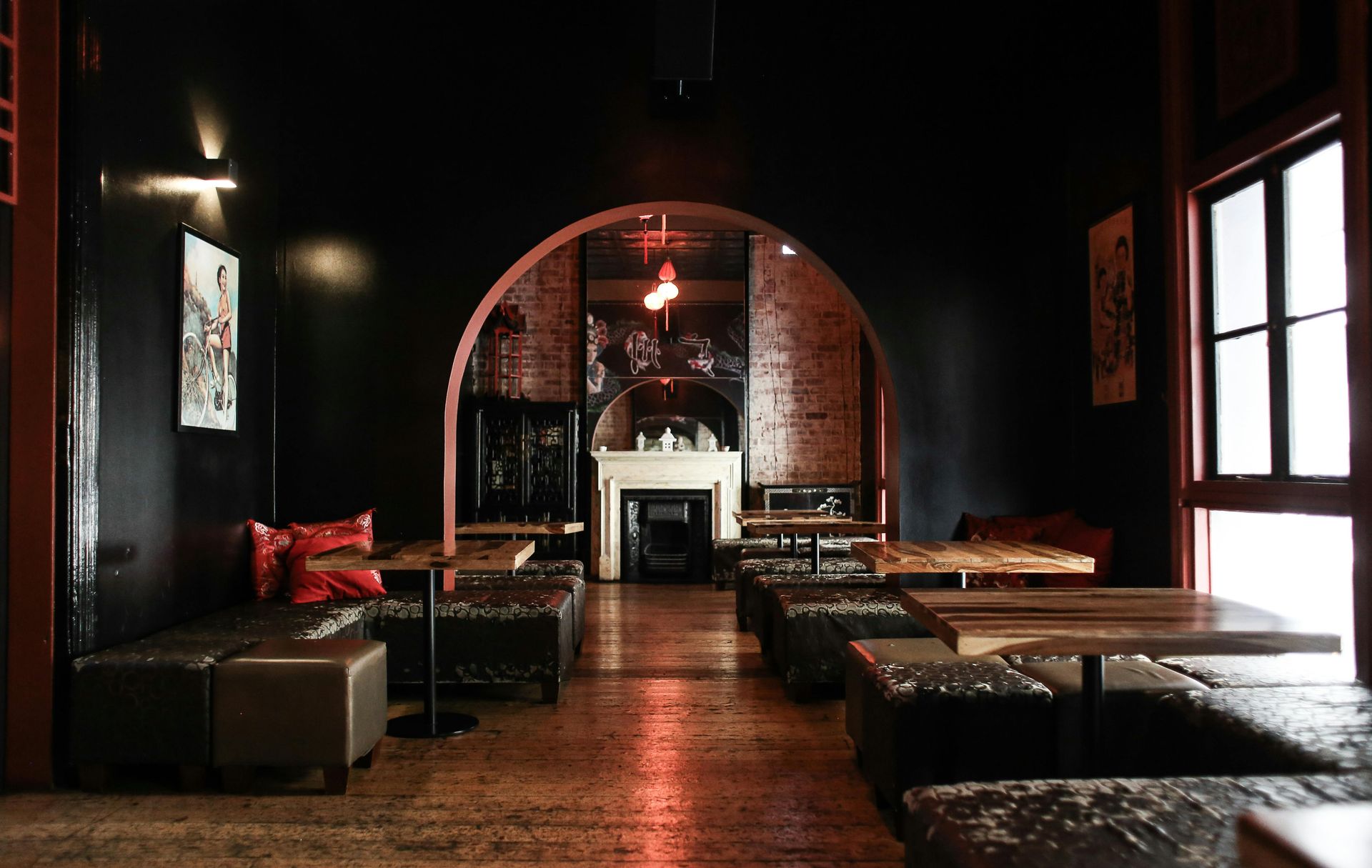
Lighting has a big impact on your home’s coziness. Think of it this way — how comfortable do you feel somewhere with harsh light-emitting diode (LED) bulbs exclusively in overhead fixtures? When the colder months start rolling around and the sun is less present, how you brighten your space could help keep some of those seasonal blues at bay. Explore some modern trends and the science behind why lighting temperature and materials matter. 1) Picking a Statement Fixture One of the best ways to make your house cozier with lighting is to include a unique fixture. Have you had your eye on a gorgeous paper lantern or a large piece with an impressive shade? Go for it! Want to put a chandelier in your fireplace to mimic a roaring blaze without the cleanup? Why not? A decorating columnist from House & Garden says the best interiors are autobiographical , meaning you should surround yourself with items that have meaning and value to you. Your home should be a place you know you can relax in, so including something you love that may be a little “out there” can help it feel more like you. 2) Switching up Outdoor Lighting When you think of outside lights, you probably picture small yet bright fixtures that can throw their glow across a lawn. These are valuable for safety, but you can also include some smaller, softer options to make your outdoor space feel more like a comfy oasis. Utilize little lanterns and string lights for a more intimate setting rather than an exposed one. 3) Adding Smaller or Vintage Elements Overhead lighting is great for brightening an entire room. However, the principal of a New York City interior design house says layered lighting can create a soft glow , as well as allow occupants to control the brightness. Plus, many have observed that they find overhead lighting irritating, uncomfortable or unflattering. If you want to make your home cozier with lighting, consider switching from a single large overhead fixture to a few smaller ones. A couple of floor lamps, alongside shelf lamps and candles, offer a soothing vibe that allows you to see without being overwhelmed. Vintage lighting elements, such as antique lamps or candle holders, add meaning and history that can make a space feel more like home. Plus, you can add decorative shades for small pops of cozy texture. If you still prefer a large light, consider adding a dimming switch to adjust the illumination level. 4) Trying Shelving Lighting Rather than placing small fixtures on shelves to illuminate their contents, consider adding warm-toned LED strips on their undersides or backs. Doing so creates the illusion that the shelves themselves are glowing, providing unobtrusive, cozy lighting. You also save a bit of space for more knickknacks, antiques or books that make a room feel more like home. Why Lighting Temperature and Materials Make a Difference Before deciding which lighting trend to try, it’s essential to understand how the bulbs and materials you choose can enhance your indoor comfort. Light affects your circadian rhythm , which is your internal clock that tells you when to wake up or when to get sleepy. Soft oranges and yellows can increase production of the sleep hormone melatonin. The bluest, brightest bulbs at a whopping 5,000 to 6,500 Kelvin (K) are great for outdoor security, but their harshness heavily disrupts the gentle vibe you’re hoping to create. They’ll also suppress melatonin by convincing your body it’s still daytime if you use them too much at night. In areas where you want to relax, look for light bulbs with a color temperature of 3,000K or less. Kitchens and bathrooms may benefit from 4,000K and over versions that are soft yet clear. You can also enhance the coziness factor by opting for natural textures over artificial ones. Interior design that mimics nature can improve your stress and creativity levels , and using such materials is better for the environment. Look for clay, wood or cork and lamp bases with cotton, wool and even rattan shades. Beat the Winter Blues in Lighting Style This Season When the cold weather and diminishing sunlight start getting you down, try switching up your lighting. Whether you opt for a new fixture, install a dimming switch or simply switch out the bulbs, you may be surprised by how it changes your mindset.
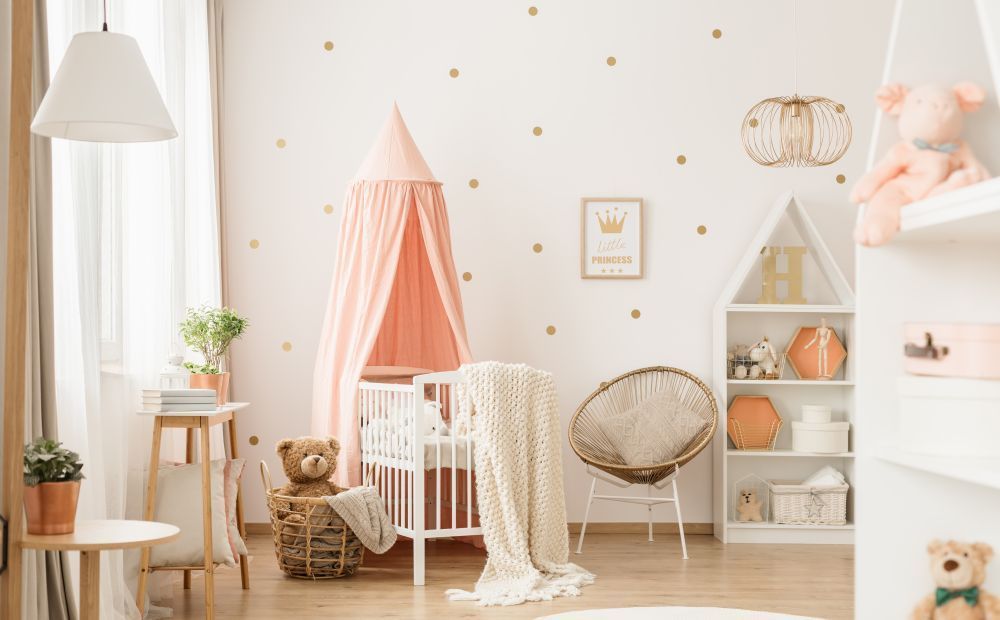
When you start designing a home or room, it’s easy to focus on the visible things first, like colors, furniture, materials and finishes. But that’s not where great design begins. Design starts long before you make any aesthetic choices. It begins with understanding how you’ll live in the space, how you’ll move through it and how it can best serve your daily life. If you want a space that looks beautiful and feels effortless, the process has to start with function and flow. Understand Your Needs Before sketching a layout or choosing materials, ask how you’ll actually use the space. This means being specific. Who will use each area? What activities will happen there? What problems need solving, such as a lack of storage, poor lighting or awkward traffic flow? For example, if your living room doubles as a workspace, you’ll need different lighting zones and storage solutions than if it’s just for relaxing. A kitchen used for large family meals requires a different layout than one built for a quick morning coffee. Write these needs down. This list will guide every decision to follow, from the size of the furniture to the location of electrical outlets. Plan the Flow Once you know your needs, focus on how people will move through the space. Flow is the invisible backbone of great design. It determines whether a home feels open and natural, or cramped and confusing. Ensure there are clear pathways between rooms to maximize the spaces. Start by sketching rough pathways through the space. Imagine walking in from the front door — where do you go next? Does the space encourage movement, or does the furniture obstruct the path? Are there clear sight lines between key areas like the kitchen, dining and living room? A well-designed flow allows easy transitions between tasks and zones. Think about: Entry points: Are they clutter-free and welcoming? Circulation: Do you have enough space to walk comfortably, even when doors are open? Natural light: How does it move through the space during the day, and can you maximize it? A great test is to physically walk through your plan on paper before anything is built. If something feels awkward now, it’ll feel even worse in real life. Design for Real Life, Not Just for Show Functionality goes beyond traffic flow. It’s about everyday details that make life easier. Plan for outlets where you’ll actually need them, consider how storage fits into your routine and ensure lighting supports your lifestyle. Daily habits drive design. For instance, by the mid-1930s, as much as 70% of the United States population began to have access to electricity, and homes began to change dramatically. Electric refrigerators replaced iceboxes, and new lighting made kitchens brighter and more practical. When you build your layout around how you use your home, it becomes timelessly functional, just like those early modern homes that adapted to new ways of living. Layer in the Beauty Only once the flow and function are right should you focus on aesthetics. This is the fun part where you choose materials, finishes, colors and textures that reflect your personality. Start with lighting. It’s one of the easiest ways to highlight the flow you’ve already created. Use layered lighting to define zones and create mood. Warmer tones can promote calmness and relaxation , and cooler tones can boost concentration. Then think about surfaces. Natural materials like wood and stone add warmth, while metals or glass can add contrast and structure. Use color strategically to emphasize how the space works. Soft tones can make rooms feel bigger, while rich hues can make open areas feel cozy. Textiles, artwork and decor are the final touches that bring soul to the design, but they should enhance the flow, not fight it. Revisit and Refine Designing a functional space isn’t a one-and-done process. Once your plan is in place, walk through it again. Visualize cooking dinner, hosting guests, getting ready for the day or winding down after work. Adjust as needed. If something doesn’t feel intuitive, change it. The best designers constantly refine until the space works effortlessly. Form Follows Function Great design starts with flow. It’s about making the space work for you before making it aesthetic. Once function is built into every corner, beauty naturally follows. Start with how you live, plan around how you move and then layer in everything that makes it feel like home.

Fall decorating is about more than a few carved pumpkins on the porch. The season brings a chance to warm up your home with color, texture and natural light, creating a cozy space that celebrates the shift in weather without feeling overdone. These creative ways help you capture autumn’s charm indoors and out. 1. Bring in Earthy, Unexpected Color Instead of relying on predictable orange tones, build your palette from nature’s softer side. Think of terracotta, mustard, olive green, rust and chocolate brown. These shades layer beautifully with neutrals like cream, camel or stone. Paint a single wall in a rich hue or mix textured throw pillows and blankets in coordinating tones. Even small accents, such as ceramic vases or linen napkins, can shift a room’s mood toward fall. 2. Add Natural Textures for Instant Warmth Texture defines autumn's decor. Combine materials that feel organic and layered rather than sleek and polished. Balance rougher textures with smooth surfaces like glass or polished metal for a look that feels curated, not cluttered. Ideas include: Woven baskets for blanket storage or firewood Chunky knit throws draped over an armchair Wood and rattan accents that bring visual warmth 3. Highlight Seasonal Greenery Skip faux leaves and instead mix real greenery with dried stems. Think eucalyptus, pampas grass or maroon-hued branches. Avoid traditional favorites like yew, which is poisonous and contains taxine , to keep your home kid- and pet-safe. A large vase on a console table or entryway shelf brings life to transitional spaces. Dry your flowers or reuse stems from summer arrangements for a sustainable touch. 4. Layer Lighting for Cozy Evenings As daylight shortens, lighting becomes key to fall’s inviting glow. Pair overhead fixtures with lamps, candles and string lights to create depth and warmth. Position seating near windows to optimize natural light. Daylight improves your comfort and mood by providing vitamin D , alleviating seasonal affective disorder. You can enhance this effect by drawing back heavy curtains to let daylight in during daytime hours. 5. Bring in the Outdoors Collect fallen leaves, pinecones or acorns during a weekend walk and display them in glass jars or wooden bowls. Mixing natural finds with candles or metallic accents creates an effortless seasonal vignette or wreath. If you have a mantel, swap summer artwork for a framed pressed-leaf display or landscape print. 6. Create a Focal Point With Fragrance Scent is one of the quickest ways to evoke fall. Layer candle aromas like sandalwood, fig, amber and clove. Add a simmer pot with cinnamon sticks, apple slices and orange peels to infuse your space naturally. Keep fragrances subtle so they complement, not compete with, your decor. 7. Switch Up Textiles Rotate out lightweight fabrics for heavier materials like flannel and soft ones like velvet and fleece or tactile wool, which stimulate your senses positively. Changing curtains, bedding and table runners can instantly make a home feel cozier without adding clutter. Mix patterns, such as plaids, houndstooth and floral prints, but stay within one color story to keep everything cohesive. 8. Style Outdoor Spaces Extend the cozy factor outdoors by using hay bales with a durable blanket cover as casual seating for firepit nights, adding lanterns to pathways and layering outdoor rugs for texture. Finish with a seasonal wreath made from dried wheat or magnolia leaves for a timeless entrance that welcomes guests before they step inside. 9. Make It Personal The best fall decor reflects your personality. Frame family photos from apple-picking trips, showcase handmade pottery or layer your favorite vintage finds. Your home feels seasonal and uniquely yours when every piece tells a story. Fall Into Action Fall decorating is less about matching a trend and more about creating atmosphere. The flicker of candlelight on a cool evening, the scent of cinnamon drifting from the kitchen, the way sunlight filters through a linen curtain — these small moments make a space feel alive. Use the season as a cue to slow down, refresh your home and rediscover comfort in the details. Whether you swap in rich textiles, experiment with layered lighting or simply open your windows to let the crisp air in, each touch brings a little more of autumn’s magic indoors. When you’re done, your home should be an invitation to gather, rest, and savor the cozy months ahead.
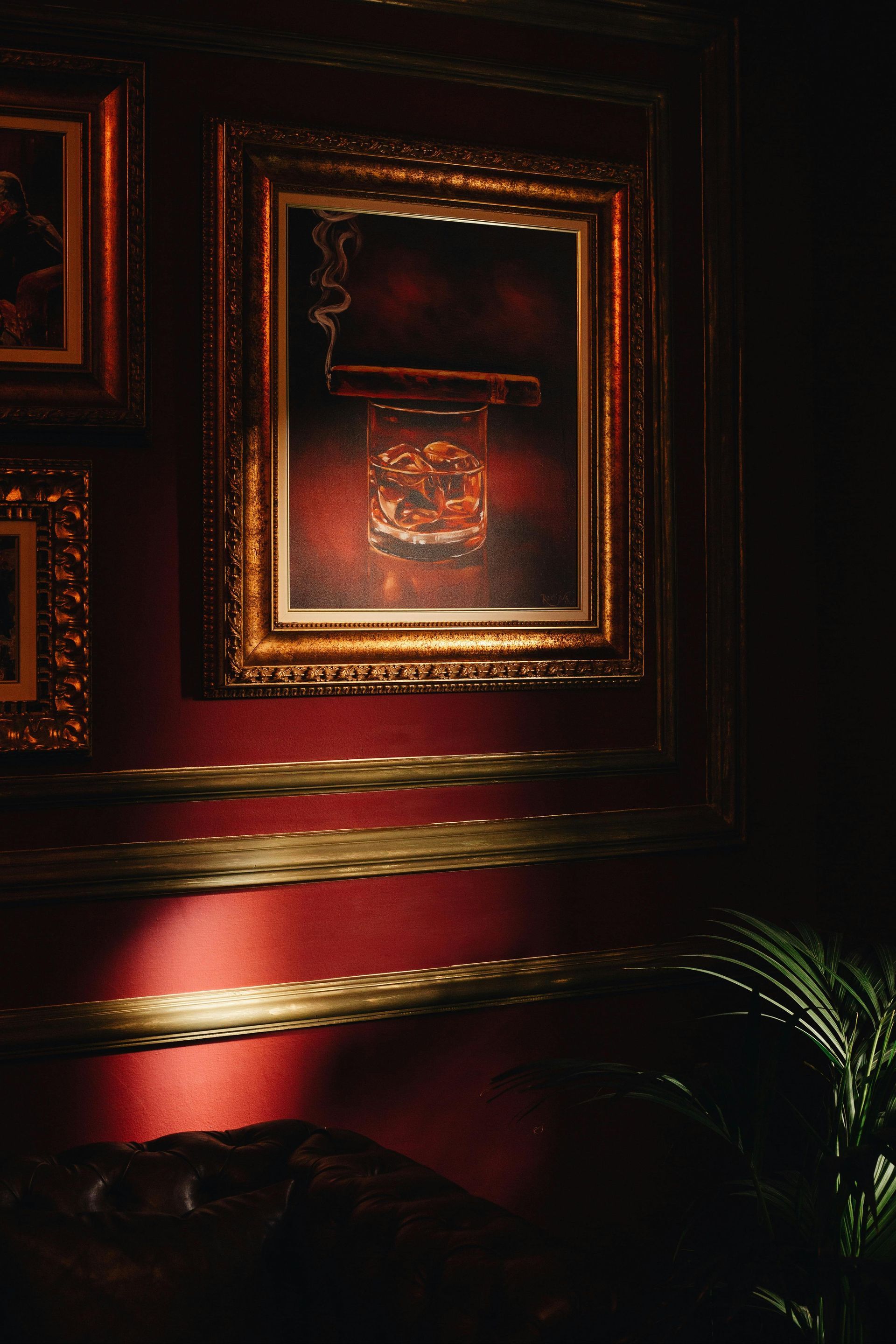
For centuries, private members’ clubs have been a refuge for the wealthy and the well-connected. Traditionally places of sophisticated luxury and aristocratic comfort, they enabled networking, private socializing and sanctuary. Today, you can recreate a similar feel at home. Here’s what to aim for, how to achieve it — and why you might want to. What Exactly is a Members’ Club Vibe? These exclusive establishments — until recently, gentleman-only spaces — evolved from the coffee houses of 17th-century London. They were designed to be somewhere for upper-class men to escape the demands of their household and instead relax, socialize and develop their contacts. Typically housed in beautiful buildings, the interiors blended luxurious, comfortable, timeless elements such as would have been found in the grand stately homes of the landed gentry. Seating was often arranged to facilitate intimate conversation, with small zones for drinking or gambling. The original clubs were a product of their time, but the intent — to be a home from home — still endures. Key Features of Members’ Club Interior Design Today, many clubs have evolved with the times and now feature a more diverse array of styles to suit modern tastes — but there’s something about the classic, aristocratic, Victorian vibe that still appeals to many. Moody Yet Cozy Color Palettes Think deep, saturated colors — timeless burgundy or oxblood, dark greens, rich blues or jewel tones — often paired with warm wood paneling or dark-toned finishes. This creates an enveloping, comforting atmosphere and exudes sophistication. Luxurious Materials and Finishes For textures, the members’ club aesthetic uses an eclectic mix of tactile fabrics and materials. From velvet to leather or mohair, furniture and cushions feel good against the body. In the rest of the room, elegant finishes include marble, polished brass, thick carpeting or rugs, and dark wood. Intimate, Layered Lighting Instead of harsh overhead light, this vibe calls for a layered approach, using a mix of table lamps, floor lamps, sconces and statement lighting pieces to create warm, inviting pools of light. Lighting may arguably be the most psychologically important element of any interior, so this is a key factor to get right. Statement Pieces With Character Traditionally, members’ clubs had iconic furniture, such as wingback chairs and Chesterfield sofas. Mismatched items were fine because each piece was valued in its own right. Rooms would also have been filled with carefully curated art and ornamental pieces, giving a strong sense of personality. 4 Steps to Get the Luxury Members’ Club Look at Home You don’t have to spend a fortune to get the look the world’s wealthiest once coveted. Here are some practical, budget-friendly ways to get started. 1. Anchor the Room With a Rich Color You could paint the whole area in moody tones, but if you want to start small, one wall in a members’ club palette tone can be very impactful. Instead, or as well on other walls, you could use flocked or textured wallpaper in a luxurious, heirloom or damask design. The flooring color is also important. Dark hardwood floors are perfect for this vibe, but if you pair them with dark furniture and walls, it may be too much. Adding some light or bright accent touches elsewhere in the space helps prevent a monotone feel. 2. Choose One “Hero” Piece of Furniture Invest in a single, high-impact item, like a velvet armchair or handsome bar cart, to act as the focal point. Since these establishments traditionally have niches and cozy corners, you don’t even have to transform a whole room. Creating a nook can be a very practical and cost-effective way to get started. If you have two chairs, put them close together and at an angle, for meaningful conversation. 3. Curate Your Clutter The members’ club aesthetic is characterful, so include bookshelves, decorative objects and a curated art collection on the wall. This is a chance to show off your personality — someone should be able to infer something about you from the objects you choose to display. Seeking out second-hand art and photos is a great way to begin building a collection. 4. Perfect the Finishing Touches Think about the small details, such as upgrading your hardware to brass, using plush rugs or adding a signature scent through candles or diffusers. You’ll be surprised by how much impact these little touches can have. Reasons to Embrace the Members’ Club Aesthetic The concept of the “third space” — somewhere that’s neither work nor home but offers the best of both — took root during the pandemic, but historically, members’ clubs fulfilled exactly that purpose. Today, a similar area can help relieve stress and act as a personal sanctuary within your own home. Because this vibe is restorative, comfortable and deeply layered, it’s a character-driven ambience that can grow with you. Every such space will be unique to the person who created it. Whether working on your laptop, chatting, reading or just enjoying a coffee, your atmospheric nook will make the moment feel special. Welcome to the Club Ultimately, the members’ club look is about creating a feeling. By layering rich colors, tactile materials and personal touches, you can craft a sophisticated sanctuary for everyday luxury. It’s your space to relax, connect and feel perfectly at home — no membership required.

Pumpkins on the porch and pine wreaths on the door are classic, but what if your seasonal décor could feel fresh, stylish and uniquely yours? From chic fall palettes to subtle Halloween touches, there are plenty of ways to make your outdoor space memorable without going over the top. And before you hang that oversized skeleton, remember — homeowners' associations often have rules that affect what’s allowed outside your front door. 1. Autumnal Colors Beyond Orange Pumpkins and bright orange are classic fall staples, but branching out into muted greens, deep plums, burgundy and soft yellows can create a more sophisticated , layered look. Mix these colors in planters, wreaths or even outdoor cushions to give your porch a fresh, updated look. Weatherproof paints and fabrics are essential to keep your décor vibrant through wind and rain. 2. Layered Texture for Cozy Curb Appeal Texture adds depth and warmth to your outdoor space. Combine wicker baskets, wooden crates, metal lanterns and natural fiber rugs to create a rich and inviting display. Layering is key — place a burlap throw over a bench, scatter cushions in complementary tones and include lanterns of varying heights. Protect delicate fabrics with weatherproof sprays or removable covers to keep everything looking fresh, even through the occasional drizzle or early frost. 3. Subtle Halloween Twists Halloween doesn’t have to mean over-the-top scare tactics. Tasteful touches, such as elegant lanterns, miniature pumpkins in muted tones or a few delicate spiderweb accents, can evoke the autumnal season without creating a haunted house vibe. When decorating your outdoor spaces, it’s always best to double-check your community guidelines because HOAs can dictate how you use your property in neighborhoods. The result is a stylish, festive look that neighbors will admire without feeling excessive. 4. Planter Creativity and Outdoor Greenery Seasonal plants are an easy way to refresh your outdoor space. Think beyond traditional mums — ornamental kale, cabbage, grasses and hardy fall flowers bring texture and color to your porch or garden. Get creative with containers, such as wood crates, ceramic pots or vintage urns, to make unique planters that elevate the display. Arrange plants thoughtfully, mixing heights and textures. Choose varieties that can withstand early frost or wind to keep your arrangement looking fresh throughout the season. 5. Outdoor Lighting Magic Lighting transforms your seasonal décor from simple to spectacular. String lights, lanterns and solar-powered path lights add warmth and ambience, highlighting your favorite features and creating a welcoming glow. Mix soft ambient lighting with a few strategically placed spotlights on pumpkins, planters or seasonal statues to create depth. Remember to check HOA restrictions if you live in a community — they sometimes limit brightness or placement to avoid disturbing neighbors. With the right lighting, your outdoor space can look magical even after dark. 6. Functional and Stylish Outdoor Accents Along with being decorative, outdoor décor can serve a purpose. Consider benches with cozy throws, fire pits for chilly evenings or decorative storage for garden tools and seasonal accessories. Neutral tones or metallic accents complement seasonal colors and make your space feel curated rather than cluttered. Protect items from rain and frost with covers or by moving them under shelter when not in use, so they stay beautiful all season long. Functional pieces allow you to enjoy both style and comfort outdoors. Bonus Tip: Keep It Low-Maintenance and Safe Even the most stylish décor won’t be enjoyable if it’s constantly falling apart or creating hazards. Stick to easy-to-maintain items and ensure walkways are clear of leaves, wet planters or decorations that could cause slips and falls. Rotating or storing seasonal items off-season preserves them and keeps your outdoor space tidy throughout the year. A little foresight goes a long way in balancing beauty, practicality and safety. Fall into Style Tasteful seasonal décor is all about balance — celebrating fall with warmth, color and personality without turning your home into a Halloween circus. By layering textures, playing with sophisticated colors, adding functional accents and considering practical factors such as weatherproofing and HOA rules, your outdoor space can wow the neighborhood and remain inviting all season long. With a bit of creativity, you can enjoy a curb appeal that’s cozy, chic and unmistakably you — no pumpkin overload required.
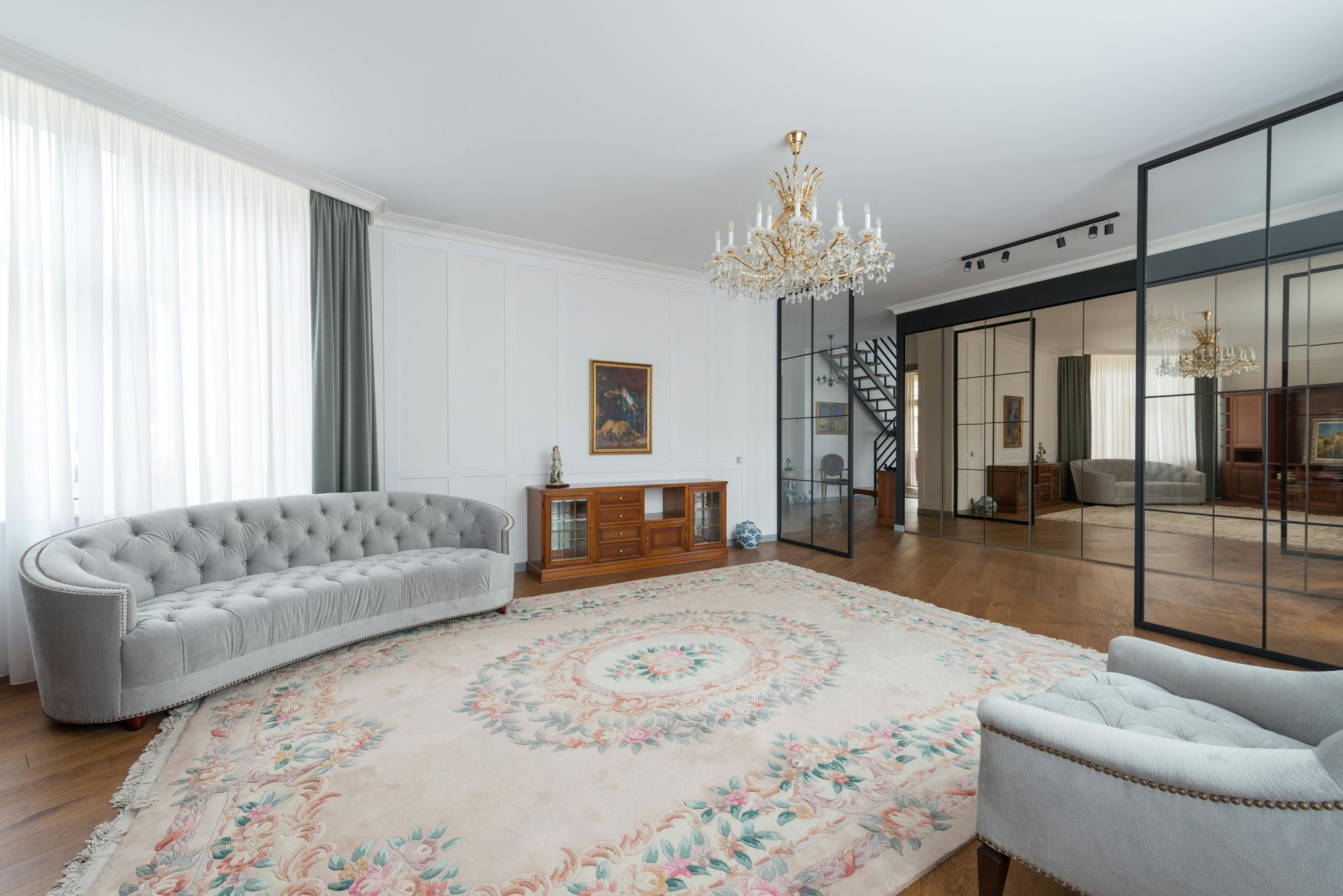
Whether you use them to record podcasts, maintain a fitness routine or awaken your inner artist, hobby spaces can become places where you unwind, develop skills and participate in meaningful activities. What should you consider when creating a dedicated hobby space in your home? 1. Plan According to the Desired Activities Determine features that can increase convenience. For example, using the room for art projects might mean installing laminate flooring rather than carpeting, which makes it easier to clean up spills. Make room for your full setup and comfy furniture when creating a gaming space. Adding more than one chair supports multiplayer activities. Perhaps you’ll use the hobby room to hone your musical skills and eventually record a home album. Soundproofing panels keep the associated noise in your hobby room. Along with blocking exterior noise, sound-dampening curtains can block up to 95% of incoming light , making them ideal for creating a space for processing film. Activity-specific features can foster creativity by providing what you need to flourish during your favorite pastimes. Planning for the necessities ahead of time can reduce stress, rather than beginning to use the hobby room and realizing it needs to be changed. 2. Choose the Best Place Consider the place in your home that best suits your activities. You may not need a home office due to return-to-office mandates, or you may have an extra room because an adult child moved out. If your home has no unused rooms, maximize any additional space. Reading nooks can double as cozy places for drawing, knitting or writing. Garages are ideal for hobbies such as woodworking, furniture restoration, and sprucing up a car or motorcycle if you’re not using the space. Not only do garages allow for larger spaces to engage in your hobby, but they are typically temperature controlled due to wooden or fiberglass doors providing natural insulation , establishing year-round comfort as you work. 3. Channel Your Interior Designer The room’s appearance can go a long way toward getting your creative juices flowing and making you love spending time in it. Decide whether to have a clear theme or embrace randomness. When selecting colors, designers recommend devoting 60% of the room to a dominant hue. Reserving 30% for a secondary option and the last 10% for accent shades completes the look. Prioritize decorating with things that make you smile despite life’s stresses and distractions. That might mean giving a few action figures or stuffed animals places of honor on a bookshelf or building a gallery wall featuring travel photos. 4. Allow Space for Shared Activities Some of the most meaningful creative endeavors happen with others. You might host a podcast, strengthen your ping-pong skills or paint on canvases with your best friend. Feedback from those you trust can also validate your ideas or illuminate new avenues to explore. It’s wise to plan the hobby space with the intention of spending more time with others. A 2025 survey from arts and crafts retailer Michaels found that 88% of shoppers said crafting increases their quality time with loved ones. To maximize seating in your hobby space, consider stools, benches, and ottomans. Desks that fold into the wall also make the space enjoyable and productive. 5. Simplify Storage to Prevent Clutter If a hobby room becomes cluttered, it is less useful overall, especially if you spend too much time searching for items that enrich the activities. Devise organizational strategies that work for you and what you plan to do in the space. For example, your fitness or yoga routine may need boxes to fit foam blocks, weights and straps, while artists benefit from ample drawers that hold pens, markers, paints and scrapbooking supplies. Storage products that can be moved are ideal if your hobby space occupies part of a larger room. It’s then easier to stow them out of the way to accommodate guests. One expert suggested using a wheeled cart to keep hobby-related items accessible and mobile. Peg boards and over-the-door organizers allow you to store items vertically, leaving more floor space open. Enjoy the Flexible Space For Your Hobbies An adaptable hobby space stays valuable as you continue to pursue activities. Consider the room’s layout, potential for hosting friends and decoration style. Utilize storage systems and move lesser-used items out of the way. Creating an ideal hobby space can allow you to enjoy it for years to come.

